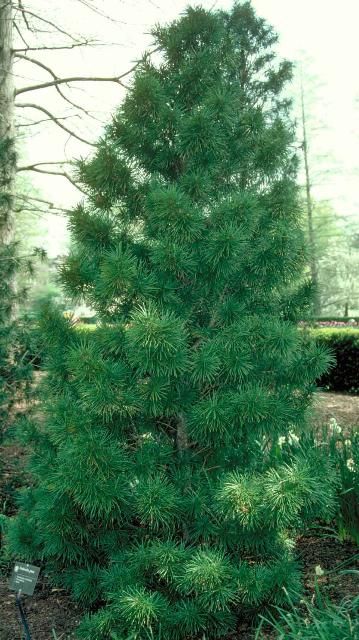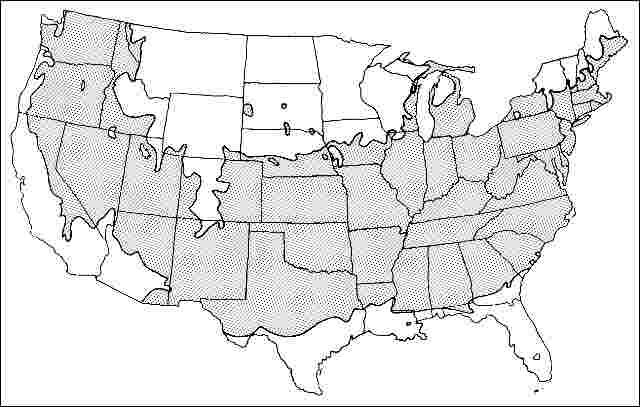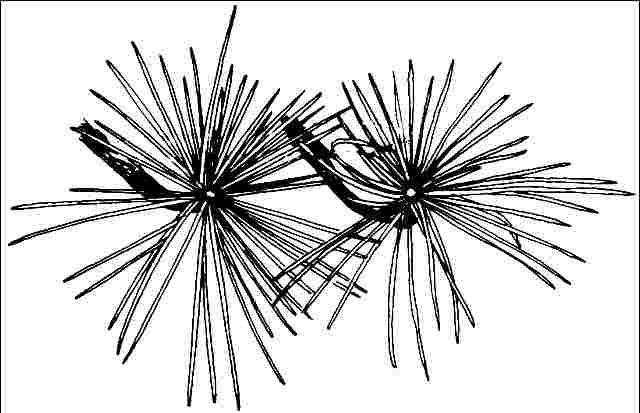Introduction
This small tree is used for its unusual texture and growth habit. The tree will grow very slowly to about 25 to 40 feet tall (in 100 years) and spreads about 15 feet. On young plants the branches stick straight out from the single, straight trunk but become more pendulous with age. The tree grows in a tight pyramid which can be utilized in a rock garden or other small residential landscape site. The effect is much like the ribs on an umbrella. Due to the unusual nature of the plant, people either love this tree or won't even look at it.

Credit: Ed Gilman, UF/IFAS
General Information
Scientific name: Sciadopitys verticillata
Pronunciation: sigh-uh-DOP-ih-tiss ver-tiss-ill-LAY-tuh
Common name(s): Japanese umbrella-pine
Family: Taxodiaceae
USDA hardiness zones: 5A through 8A (Fig. 2)
Origin: not native to North America
Invasive potential: little invasive potential
Uses: specimen; container or planter
Availability: not native to North America

Description
Height: 25 to 30 feet
Spread: 12 to 15 feet
Crown uniformity: symmetrical
Crown shape: pyramidal
Crown density: moderate
Growth rate: slow
Texture: fine
Foliage
Leaf arrangement: whorled (Fig. 3)
Leaf type: simple
Leaf margin: entire
Leaf shape: linear
Leaf venation: parallel, none, or difficult to see
Leaf type and persistence: needled evergreen, evergreen
Leaf blade length: 2 to 4 inches
Leaf color: green
Fall color: no color change
Fall characteristic: not showy

Flower
Flower color: unknown
Flower characteristics: not showy
Fruit
Fruit shape: oval
Fruit length: 1 to 3 inches, 3 to 6 inches
Fruit covering: dry or hard
Fruit color: brown
Fruit characteristics: does not attract wildlife; not showy; fruit/leaves not a litter problem
Trunk and Branches
Trunk/bark/branches: branches droop; showy; typically one trunk; thorns
Pruning requirement: little required
Breakage: resistant
Current year twig color: green
Current year twig thickness: thick
Wood specific gravity: unknown
Culture
Light requirement: full sun, partial sun, or partial shade, shade tolerant
Soil tolerances: clay; sand; loam; acidic; well-drained
Drought tolerance: moderate
Aerosol salt tolerance: unknown
Other
Roots: not a problem
Winter interest: no
Outstanding tree: yes
Ozone sensitivity: unknown
Verticillium wilt susceptibility: resistant
Pest resistance: free of serious pests and diseases
Use and Management
A bit of shade during the hot part of the day will produce the best plants in the southern part of its range. The orange, peeling bark is quite attractive but is usually hidden by the foliage. Provide a moist, acidic soil and protection from the wind. The tree is probably best used as a specimen, occasionally for private, protected gardens for a very special effect. A truly unique tree which grows very slowly, it is rare in cultivation. Only the most patient nursery operators grow this plant.
Propagated by seed or from cuttings.
'Pendula' is listed as a cultivar with pendulous branches.
Pests and Diseases
No serious pests or diseases exist for this tree.